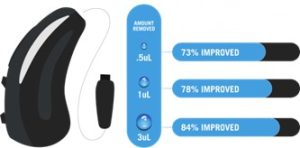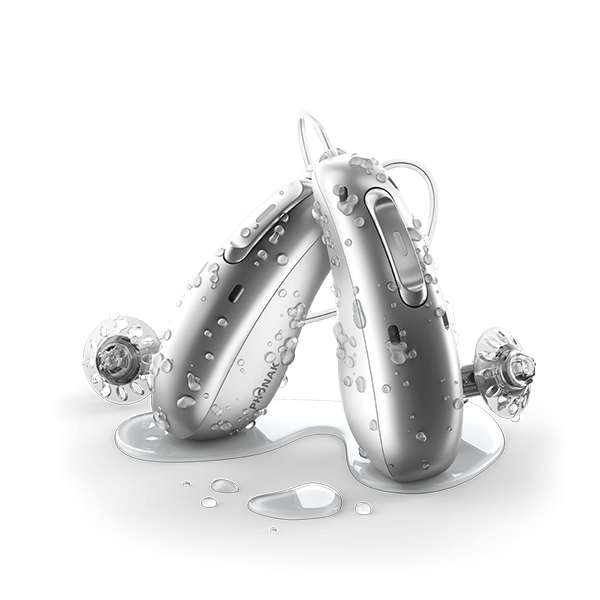What every hearing aid wearer should know about moisture damage.

The humidity inside a normal human ear canal can be likened to that of the amazon rainforest! As humans, made up of 70% water and running at 37 degrees, we are designed to create humid environments in parts of our body that we may not realise – like our ear canals. We know that electronics are not supposed to come into contact with water, but for those of us who wear hearing aids, we routinely sit our precious electronic hearing devices into our humid ear canals for the best part of each day. We expect our hearing aids to function consistently and reliably so that we too can function in a hearing world, but is this a reasonable expectation given the moisture levels we are exposing our devices to?
Hearing aids are electronic devices and contain digital microchips that will be rusted and damaged if exposed to moisture. Many hearing aids these days profess to be water resistant, and some even go so far as claim they are in fact waterproof (IP68 rating). If you have chosen a device that has a water resistance rating, it might be reasonable to think you have done all you can to guard against moisture damage and your devices will be able to function well regardless of moisture exposure.
While reliability of hearing aid performance has improved over the years, a recent study by Redux revealed that 98% of today’s hearing aids that are rated as ‘waterproof’ had some degree of moisture inside them.
The reality is that hearing aids spend hours surrounded by the skin which releases moisture (sweat) to control body temperature. It is hard to completely dry our ears after a shower, and residual moisture in the ear canal will vaporise as our body warms up and easily enter the hearing aid that is in our ear.

The effects of perspiration can also be greater due to exercise, certain medications, or other underlying health conditions. Additionally, when we live near the coast – like most Australians do – or spend time on or near the sea, the inherent moisture that exists in the air as vapour can pass through traditionally water-resistant barriers. But it is not just the warmer months that cause a problem. Hearing aids will also get wet in cold weather as a result of condensation due to fast temperature change when we move from outside to inside, and also from the temperature differential being higher when we put a cold device into our warm ear canal after an evening of rest. And then there is rain – we all get a little drizzle on us at times, and whilst we may take off our glasses to make sure we can see clearly after being rained on, are we as diligent with our hearing aids?

Moisture is the leading cause of hearing aid failure found by hearing aid manufacturer service departments. It can cause a hearing aid to not only sound as though it is not working at all, but also can make the device sound weak, unclear, or distorted. Additionally, exposure over time can essentially rust out internal components, and the impact might be so gradual that it can be hard for the wearer to notice anything has changed until the damage has become too severe to recover and the device is damaged beyond repair.
While it is virtually impossible to prevent any exposure of a hearing device to moisture, it is very possible to prevent the damaging effects that moisture can have. Electronic moisture removal systems designed to be used with hearing aids have been around for a few years and can be a great way to ensure moisture removal on a daily basis. These drying systems are simple to use at home, and so provide a convenient option, although at additional cost up front. These dryers were designed to be run on devices without a battery in them, so if your device contains a rechargeable battery that can’t be removed, these may not be suitable, as the temperatures can get too high and cause damage to your device.

Recently, a new and innovative system called Redux has entered the market. Redux is a drying system that uses professional moisture removal technology that has been used my mobile phone repair shops for some time. Redux has many benefits over other drying systems in that it is:
- FASTER: Redux is proven to dry hearing instruments in about 9 minutes with the push of a button, minimising downtime and maximising your time with your hearing aids in your ears.
- DRYER: Redux applies endpoint drying technology to maximise moisture removal from treated hearing devices.
- SMARTER and SAFER: Redux combines vacuum drying with humidity level measurement to vaporise liquid at a low temperature that is safe for even rechargeable hearing devices.
- VERIFIED: Redux provides real-time measurement of the amount of moisture removed during the drying process and you will be issued with a report that shows the total amount on completion, so you know exactly what was removed from your device.
For most people a quarterly Redux treatment will be sufficient to remove any damaging moisture and ensure longevity and reliability of your hearing aids. Currently, the Redux system is only available professionally in selected hearing centres who have chosen to purchase the machine, but a take home version is in development by the Redux team.
So regardless of whether you can see that your hearing aids are being exposed to damaging moisture levels, they nevertheless are. Being aware of this and understanding prevention and treatment options will not only reduce the risk of damage to your hearing aids but will minimise your own stresses that can come from not hearing as well as you could or having to be without your devices during repairs.
The Soundfair Hearing Centre is proud to offer Redux treatments in our centre, and a free cuppa is always on offer while you wait. Treatments can be purchased individually, or in annual or warranty life subscriptions. To find out more, contact us on 1300 842 242 or visit us online and make an appointment.
Would you like to learn more? View the Redux video here: https://youtu.be/f2XFFMpYZX0
